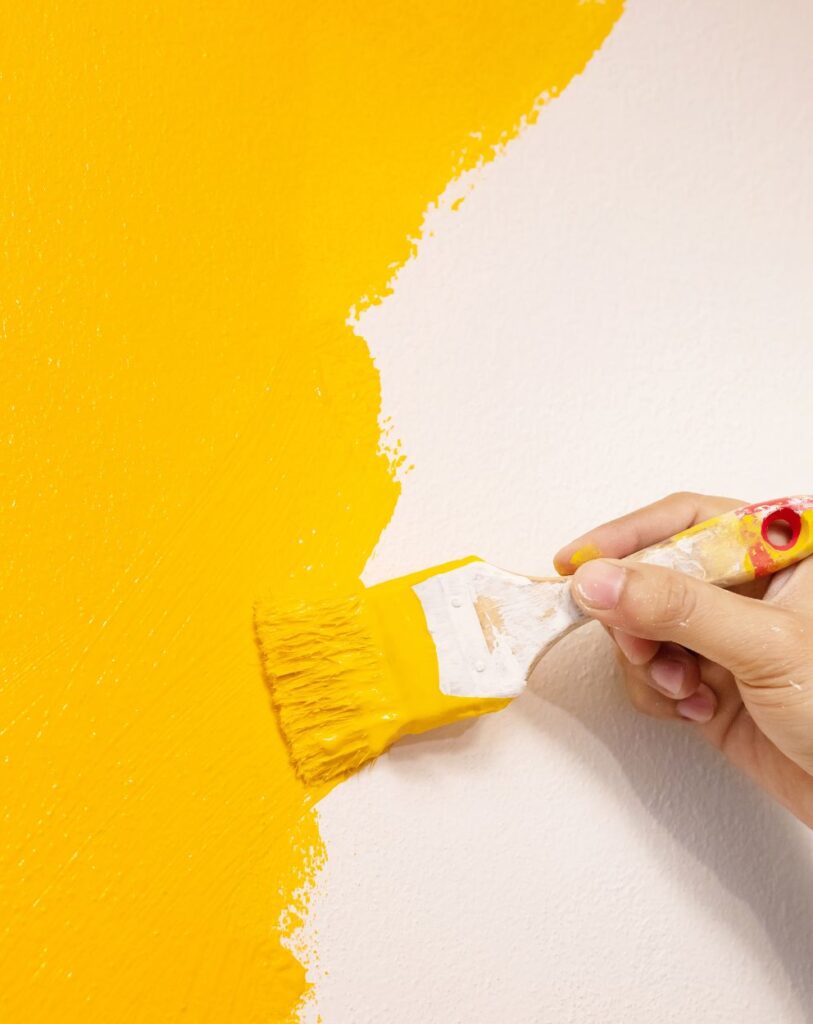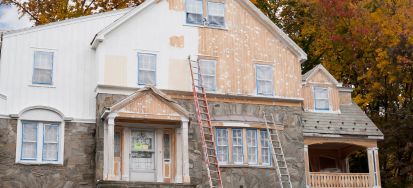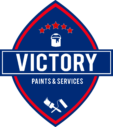Painting Services Protocols
When it comes to professional painting services, safety protocols should never be taken for granted. In order to provide a safe working environment for painters and clients, safety precautions including donning protective gear, establishing enough ventilation, and utilizing eco-friendly paints are essential. Additionally, keeping a healthy workstation requires being aware of the possible risks posed by paint fumes and taking proactive measures to reduce them.
It’s important to recognize that safety isn’t just about preventing accidents; it also encompasses environmental considerations. Professional painting services that prioritize sustainability through proper waste management and adherence to local regulations contribute to a greener future. Professional painters can demonstrate their commitment to delivering high-quality results while upholding responsible practices by focusing on safety protocols that encompass both health and ecological factors.
Moreover, incorporating safety protocols into professional painting services highlights a commitment to quality and professionalism. By adhering to strict safety standards, professional painters instill confidence in their clients, assuring them that their property is being handled with care and consideration for health and safety. Emphasizing these protocols in every project not only protects everyone involved but also showcases the dedication of professional painters to delivering outstanding results in a safe and responsible manner.

Exterior Painting Services: Prioritizing Safety Above All
In the realm of exterior painting services, safety takes precedence. Professional painters recognize the inherent risks of working at heights, handling chemicals, and maneuvering around construction sites. The commitment to safety is ingrained in their work ethic, ensuring that every project is executed with the well-being of both the painters and the clients in mind.
Painting Safety Protocols: Comprehensive Training and Education
One of the foundations of safety in professional painting services is comprehensive training. Painters undergo rigorous training programs that cover various aspects, including proper equipment usage, hazard identification, and emergency response procedures. Painting safety protocols are not merely guidelines; they are principles instilled through ongoing education to create a safety-conscious workforce.
The Importance of Personal Protective Equipment (PPE)
Personal Protective Equipment (PPE) is a cornerstone of safe, professional painting practices. Whether working at heights, handling chemicals, or using power tools, painters are equipped with the necessary gear to mitigate risks. PPE, which includes respirators, safety glasses, safety harnesses, and gloves, keeps painters safe from potential harm so they can concentrate on providing excellent exterior painting services.
Safe Professional Painting Practices: Assessing and Mitigating Risks
Beyond PPE, safe, professional painting practices involve continuously assessing risks at the job site. Experienced painters are trained to identify potential hazards, from unstable surfaces to electrical wiring, and take proactive measures to mitigate these risks. This diligence contributes to accident prevention and creates a safer environment for the painting team and the occupants of the property.
Environmental Considerations in Exterior Painting Services
Safety in professional painting extends beyond the immediate well-being of individuals; it encompasses environmental considerations. Properly handling and disposal of paint-related materials, such as brushes, solvents, and paint cans, are integral to safe, professional painting practices. Responsible waste management ensures that the environmental impact is minimized, aligning with the commitment to sustainability in the painting industry.
Painting Safety Protocols: Weather-Responsive Practices
Great Exterior painting services are often weather-dependent, and safe professional painting practices account for these variables. Painting safety protocols include assessing weather conditions before and during the project. Extreme weather conditions such as rain, strong gusts, or high temperatures can endanger painters and the quality of their paint job. Professional painters ensure a safe and effective exterior painting process by monitoring and responding to weather changes.
Equipment Maintenance and Inspection
Safe, professional painting practices extend to the regular maintenance and inspection of equipment. Painters rely on various tools and machinery, such as ladders, scaffolding, and spray equipment. Thorough inspections before each use, routine maintenance, and prompt repairs contribute to accident prevention. Well-maintained equipment enhances safety and ensures the efficiency and quality of exterior painting services.
Painting Safety Protocols: Lead-Based Paint Awareness and Handling
Lead-based paint may be present in older properties, requiring specialized knowledge and precautions. Painting safety protocols in professional services include lead awareness training for painters. Strict adherence to safe handling, encapsulation, and removal procedures for lead-based paint shields the painting crew and the building’s inhabitants from potential health risks related to lead exposure.

Emergency Response Preparedness
Despite meticulous safety measures, unforeseen circumstances may arise. Professional painting services prioritize emergency response preparedness as a key component of safe practices. Painters undergo training in first aid, and emergency evacuation plans are established for each job site. This proactive approach ensures that the team can handle emergencies swiftly and effectively, minimizing the impact on personnel and property.
Safe Professional Painting Practices: Client Communication
Effective communication with clients is another dimension of safe, professional painting practices. Before commencing any exterior painting project, professional painters discuss safety measures with homeowners. This includes informing residents about potential disruptions, discussing safety precautions to be taken on their part, and addressing any concerns they may have. Clear communication fosters a collaborative approach to safety.
Compliance with Industry Standards and Regulations
Professional painting services adhere to industry standards and regulations that govern safety practices. Respecting the standards established by the Occupational Safety and Health Administration (OSHA), local laws, and industry best practices is essential. This commitment ensures that exterior painting services are conducted within a framework that prioritizes the safety of painters, clients, and the community.
Continuous Improvement in Safety Practices
The commitment to safety is an ongoing journey for professional painting services. Regular reviews, feedback sessions, and assessments contribute to continuously improving safety practices. Whether incorporating new technologies, updating training modules, or adopting innovative safety measures, professional painters are dedicated to evolving with the industry to enhance the safety of their teams and the quality of exterior painting services.
Check out this article from Performance Painting called WHY PAINTING SAFETY SHOULD MATTER TO YOU, THE BUSINESS OWNER.
Conclusion:
In conclusion, safety is paramount in professional painting services, especially regarding exterior projects. Painting safety protocols, encompassing comprehensive training, the use of personal protective equipment, environmental considerations, and emergency response preparedness, ensure that the painting process is visually appealing and conducted with the well-being of individuals and the environment in mind. Homeowners who value safety may trust skilled painters, knowing that their outside painting project will be completed with accuracy, efficiency, and dedication to the greatest safety standards.
FAQs:
Q: How do professional painting services ensure safety on the job?
A: Professional painters prioritize safety by using proper equipment, following safety protocols, and implementing best practices.
Q: What kind of protective gear do professional painters wear?
A: Professional painters wear protective gear such as goggles, gloves, masks, and coveralls to safeguard against paint fumes and splatters.
Q: Are there any specific safety measures taken when working at heights?
A: When working at heights, professional painters use secure ladders, scaffolding, or lifts and adhere to strict fall prevention guidelines.
Q: How are hazardous materials managed during a painting project?
A: According to industry regulations and disposal protocols, professional painters handle hazardous materials such as lead-based paint or chemicals.
Q: What precautions are in place for preventing accidents during interior painting projects?
A: To prevent accidents during interior painting, professionals take measures like securing drop cloths, taping off areas, and keeping workspaces organized and clear of obstacles.
